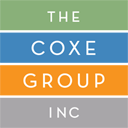It’s not about one solution. It’s about providing critical information to help you make the right decision for your firm.
Ownership transition: A leadership evolution opportunity.
Martin was one of two 50-50 owners in a 20-person architecture firm when he decided to depart the firm several years before “normal” retirement – so that he could become more involved with a real estate development company.
Martin and his partner, Tom, identified four members of the firm who they felt could collectively lead and manage the firm. They planned to sell the departing owner’s interest to the four, with each acquiring one eighth of the total ownership, with Tom continuing to hold 50 percent. We were asked to assist the firm in the near-term ownership expansion and with Martin’s transition out of the firm.
The youngest of the four was Roland, some 17 years junior to the oldest of the group. He clearly demonstrated the most marketing sensibility and potential, the most marketplace presence, and the strongest design talent. Roland also had the most confidence, justifiably so, based on others’ views, that he could establish a new firm successfully, given his talents, his mindset, and his visibility and connections in the marketplace.
Roland was very concerned about the other three whom had been identified as his partners in the expanding ownership structure. One in particular, Kevin, struck him as not sharing the design aspirations and some of the fundamental goals of the other three. Our conversation with Kevin confirmed these differences and also led us to conclude that he was unlikely to change.
As an early step in the consulting process, we learned of Roland’s concerns and that his conviction was so strong, that he would sooner leave the firm than be a partner with Kevin. Furthermore, Roland felt that his role in marketing and design leadership warranted more ownership and more voice in governance that the others.
When we took Roland’s concerns to the two owners, we learned that they were unaware of his feelings – as the culture of the firm suppressed controversial issues so as not to rock the boat. While we realized that such attitude had served the firm reasonably well – as demonstrated by low turnover and a strong sense of “team” – it would deter the firm from achieving the most successful transition. More specifically, we saw Roland as the key to the next generation of ownership successfully leading the firm. Part of the reason was his personal style of being neither arrogant nor egotistical, but rather addressing the transition subject rationally and objectively.
We encouraged a direct conversation between Roland and the founders. In that conversation, Martin and Tom agreed with the pivotal role that Roland would likely play, since of the prospective partners, only Roland had developed new client relationships that developed into projects for the firm. Kevin was somewhat effective as a project manager, but had a trail of unhappy clients, and the other two prospective partners managed a significant amount of the firm’s workload, but were most effective in executing others’ designs, rather than leading the creative effort.
It became clear that Roland would leave the firm rather than be an equal partner with the others and that he would not be partner with Kevin in any circumstances. Furthermore, the other prospective owners, Amy and Mark, looked to Roland as much as to Tom to lead the firm.
We explored options with Martin and Tom, and they decided to offer Martin’s ownership to Roland, and they decided that he, in turn, would decide to whom and how much he would offer Amy and Mark.
Kevin solved the potential problem by resigning immediately after hearing the transition plan that would have him remain as a non-owner. Roland decided to acquire two-thirds of Martin’s shares and offered one sixth each to Amy and Mark.
With the ownership challenge resolved, at least for the near term, everyone in the firm focused on clients, projects, and marketing. The firm’s fortunes soared. Martin was fully paid for his shares two years ahead of schedule. A few years later, the ownership group of Tom, Roland, Amy, and Mark decided on the same approach to divesting Tom’s shares, with Roland being the arbiter of how much of Tom’s shares will go to each existing owner and to new ownership candidates.
This case emphasizes several important concerns:
- Sometimes a controversial approach is necessary to achieve a good solution.
- The owners’ willingness to consider alternatives to the predetermined concept was critical to achieving a successful plan.
- Shared values at the ownership level don’t guarantee success, but without them the chances diminish substantially.
- Transition of leadership is generally a bigger challenge than transition of ownership.
- Marketplace presence and the ability of some or all members of the next generation to bring in work are critically important. Simply being able to do projects well and do them profitably isn’t enough.
- The mechanics of ownership transition are a lot easier in a highly profitable firm, and more to the point, truly successful transition is not possible with only marginal profitability.
Deep industry expertise
The Coxe Group is not one or two consultants — but a group of 10-plus who together bring more than 300 years of experience in organization management, financial management, marketing, personnel management, and behavioral science. Many of us are registered professionals in the fields we serve. Some of us have carried responsibilities as principals and managers.
Our richness comes from our diversity. And our strength comes from our collaboration. With such a broad base, we can address collectively all the issues surrounding a firm’s goals, plans, structure, people, and finances. When you work with The Coxe Group, you have access to this entire resource.
Today’s increasingly complex organizations need to be skillfully led and managed to endure. We are proud to be in the forefront of those who have responded to these leadership and management needs and advanced the state of the art.




